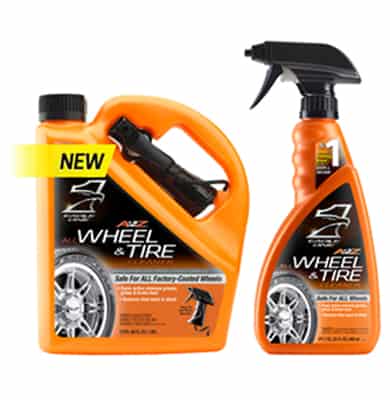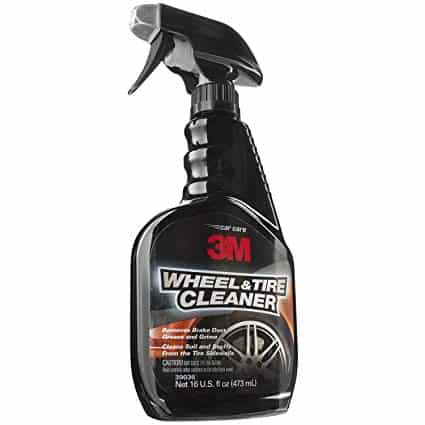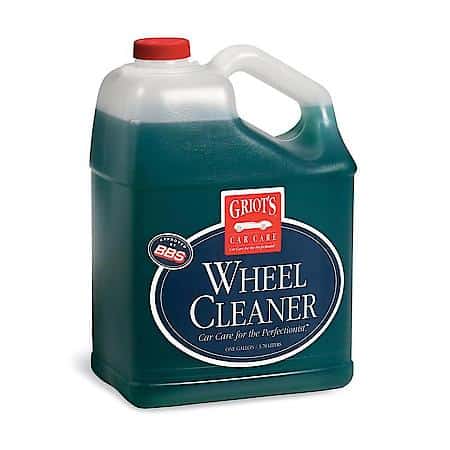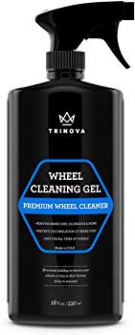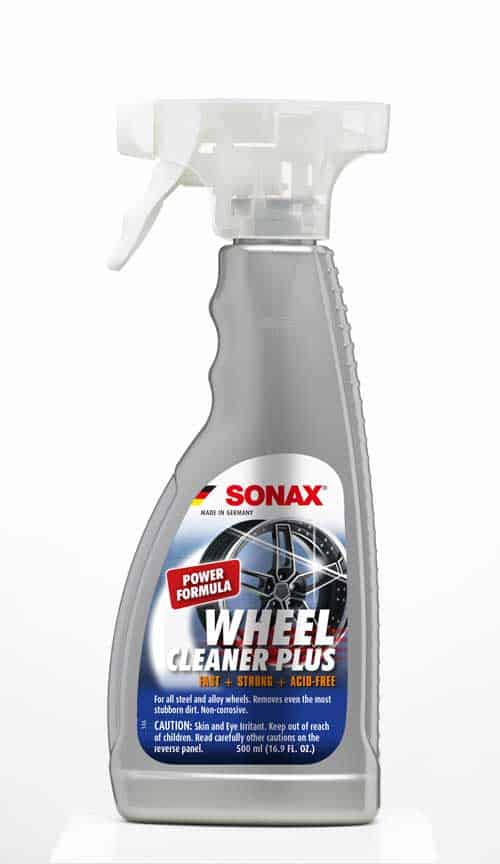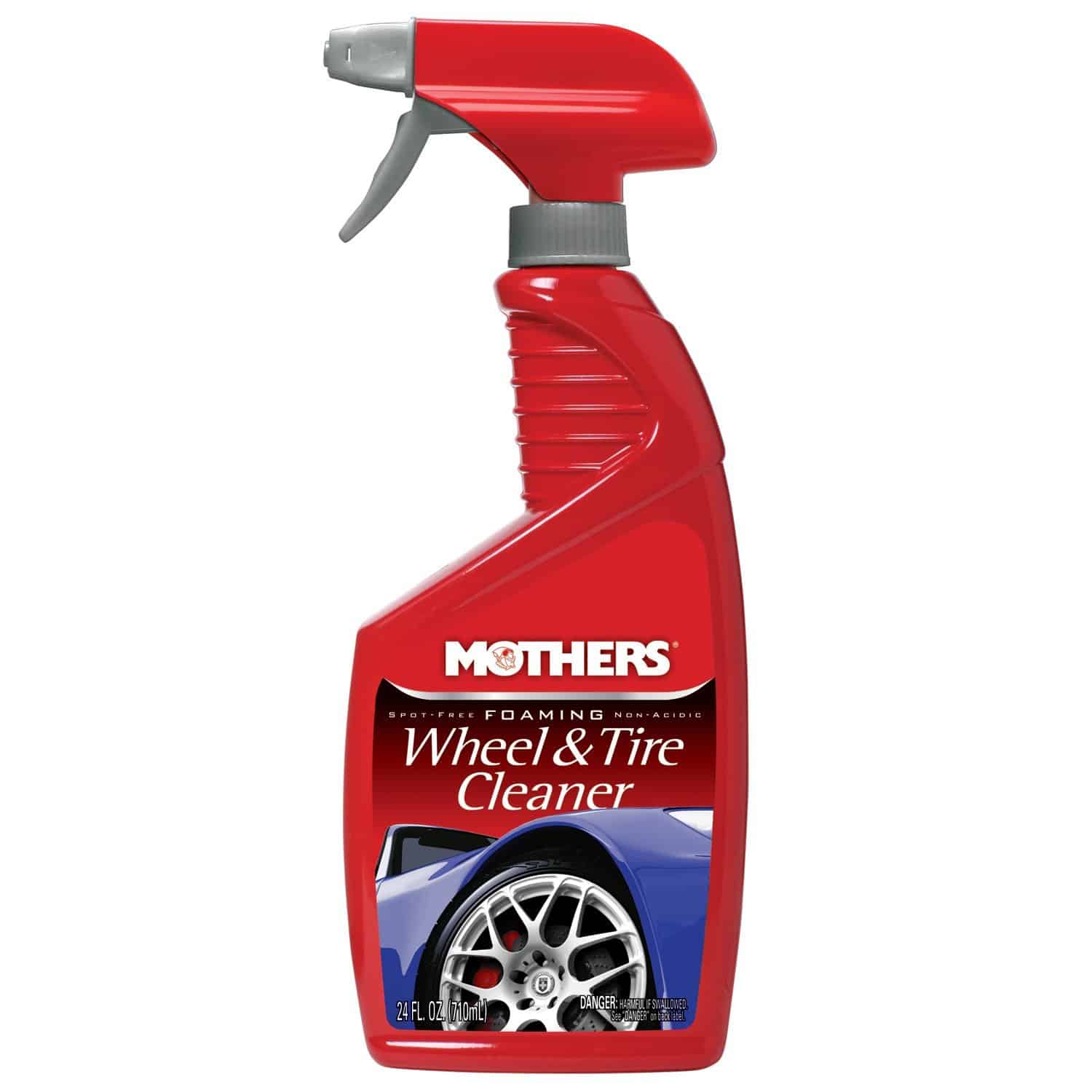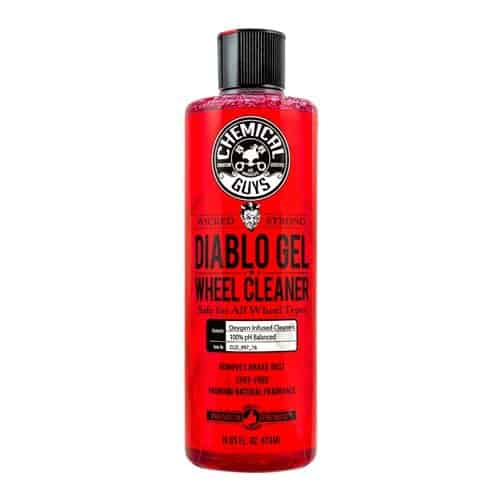Do you see that black, dusty, gunk-like substance all over your wheels? That’s called brake dust, and it’s more than just unsightly – it’s terrible for your ride.
Brake dust builds up over time on rims and hubcaps during the normal life of any vehicle. Brake dust isn’t hard to accumulate, but it is hard to get rid of thanks to its uncanny ability to get stuck in the small ruts and divots in your rims.
Brake dust is ugly and will eventually cause etching and erosion on your wheels in addition to staining any aluminum wheel it comes in contact with. We’d say it’s also worth mentioning that inhalation or prolonged exposure to certain types of brake dust has been linked to health issues.
When it comes to keeping your wheels and your lungs in tip-top shape, it’s important to remove brake dust as quickly as possible. Unfortunately, removing brake dust from your rims, hubcaps and aluminum wheels is far easier said than done.
What is Brake Dust?
Officially, brake dust is over 90% iron and 10% accumulated road grime and dust. Brake dust is caused by your steel and cast iron brakes continually rubbing against the brake pads.
The majority of automotive brakes and brake pads are made from a semi-metallic material arranged in groups of fibrous steel.
Steel is an alloy of iron and carbon. It’s much stronger than iron and far denser, which means when the two metals come in contact with each other, steel is going to erode the much softer alloy every time.
Steel is used in creating automotive brakes and brake pads. The regular and frequent abrasion of the two braking elements causes the steel fibers to scratch and gouge microscopic iron dust particles and larger metal shavings out of both braking components.
The brake dust then gathers around the wheel as a dark, viscous residue that is next to impossible to remove without specialty cleaners.
What’s more, if you plan on continually using your vehicle you will need to maintain a regular regimen of cleaning your wheels and removing the damaging brake dust.
Why is Brake Dust Bad For My Wheels?
Brake dust is terrible for your wheels because the microscopic iron and carbon particles, created by the continuous abrasion of the automotive brakes and brake pads, can cause corrosion, pitting, and permanent damage to your alloy and aluminum wheels.
Brake dust isn’t only damaging to your wheels, rims, and hubcaps; it’s also a threat to your clear coat and the underbody of your vehicle. The carbon and iron fibers cause erosion. Metal erosion plus water and road grime accumulated from regular driving is the perfect recipe for a rusted frame and crumbling undercarriage.
What are the Best Products for Removing Brake Dust?
Brake dust can be avoided – or at least minimized – by purchasing specialty carbon fiber and nonmetallic aftermarket brakes and brake pads.
However, most car and motorcycle owners are not willing to invest the extra money in aftermarket brakes and brake pads. We recommend purchasing a specialty brake dust cleaner and applying it to the affected wheels, following the brake dust removers printed instructions until the wheel is completely clean of brake dust and brake dust residue.
How To Remove Brake Dust
Brake dust is removed via specially designed wheel cleaners, heavy duty solvents, and good old-fashioned elbow grease. In order to be entirely confident that you have removed all of the damaging brake dust from your wheels, we recommend you follow these steps:
Park in a level area with ample drainage
We need to think about the environment before we do any work on our vehicle, even cleaning them. The chemicals and solvents used in brake dust cleaners are not always environmentally friendly. Ensure you have parked your vehicle far from any creeks and environmentally protected areas.
Remove hubcaps
Lots of cars come with hubcaps that are just as susceptible to brake dust and road grime as the wheels beneath them. Whether you are cleaning your hubcaps, wheels or both, you’ll ensure the most thorough clean if the hubcaps are removed and washed separately.
Hubcaps are easy to remove. Most pop right off.
Ensure the wheels are cool
The wheels of your car heat up from friction between the brake pad and the brake rotor (disk) when you drive. If you have recently driven your vehicle, allow your wheels to cool down before proceeding.
Prepping the surface of the wheel
Here is where you give your wheels a through regular cleaning –
- Spray away the dirt and grime that can easily be removed with a hose or pressure washer. There is no use trying to remove brake dust when the wheel is still covered in regular dust.
- Combine automotive soap and water. If you don’t have any automotive soap or cleaners, regular dish soap will work just fine.
- Wash the wheel with an automotive sponge to ensure full coverage inside the spokes and along the wheel edge where it meets the rubber of the tire.
- With a hard bristle brush or heavy sponge, scrub any stuck-on grime and dirt from the wheel.
- Thoroughly rinse the wheel of any soap and remaining road grime. If the wheel is still dirty, repeat the washing and rinsing process until clean.
- Protect yourself. Just as brake dust can be damaging to your health, so can the brake dust cleaners that are meant to remove it. Brake dust is a stubborn nuisance and requires an arsenal of heavy duty and powerful chemicals to be dealt with properly. You don’t want to get these chemicals on your skin, but you especially don’t want them in your eyes or mouth.
- Apply brake dust cleaner to the surface of the wheel. Apply your chosen brake dust cleaner to the wheel, being sure to include the entire outside and inside of the wheel and the spokes.
- Allow the cleaner to “work its magic.” Most wheel and brake dust cleaners require time to soak in. Some cleaners foam up and form exotic colors while others simply rest on the surface of the wheel and chemically dissolve the brake dust.
- Once you have waited the indicated amount of time, grab your hard bristled brush or hard sponge and apply some elbow grease to the wheel. Scrub the problematic areas of the wheel thoroughly. Brake dust is tricky and stubborn. You will need to roll up your sleeves and put a solid effort into scrubbing all the brake dust from your wheels.
- Rinse and repeat if necessary. After all, it is brake dust we’re talking about here. You may need to repeat this process several times before all of the brake dust is removed from the wheel.
Top Ten Brake Dust Cleaners of 2020
Brake dust is one of many automotive nuisances that exist, but it’s a stubborn nuisance that doesn’t just simply go away. Brake dust will keep coming back as long as you decide to drive your vehicle.
We sifted through the hundreds of various automotive and wheel cleaners on the market to find the best of the best.
What we found was that although there are a number of somewhat effective homemade solutions to brake dust, none seem to have the deep-cleaning effect or grease-removing power of the top ten brake dust cleaners compiled here.
The brake dust cleaners that didn’t make the list either lacked the cleaning power to remove normal brake dust accumulation or required far too many applications to get the job done.

